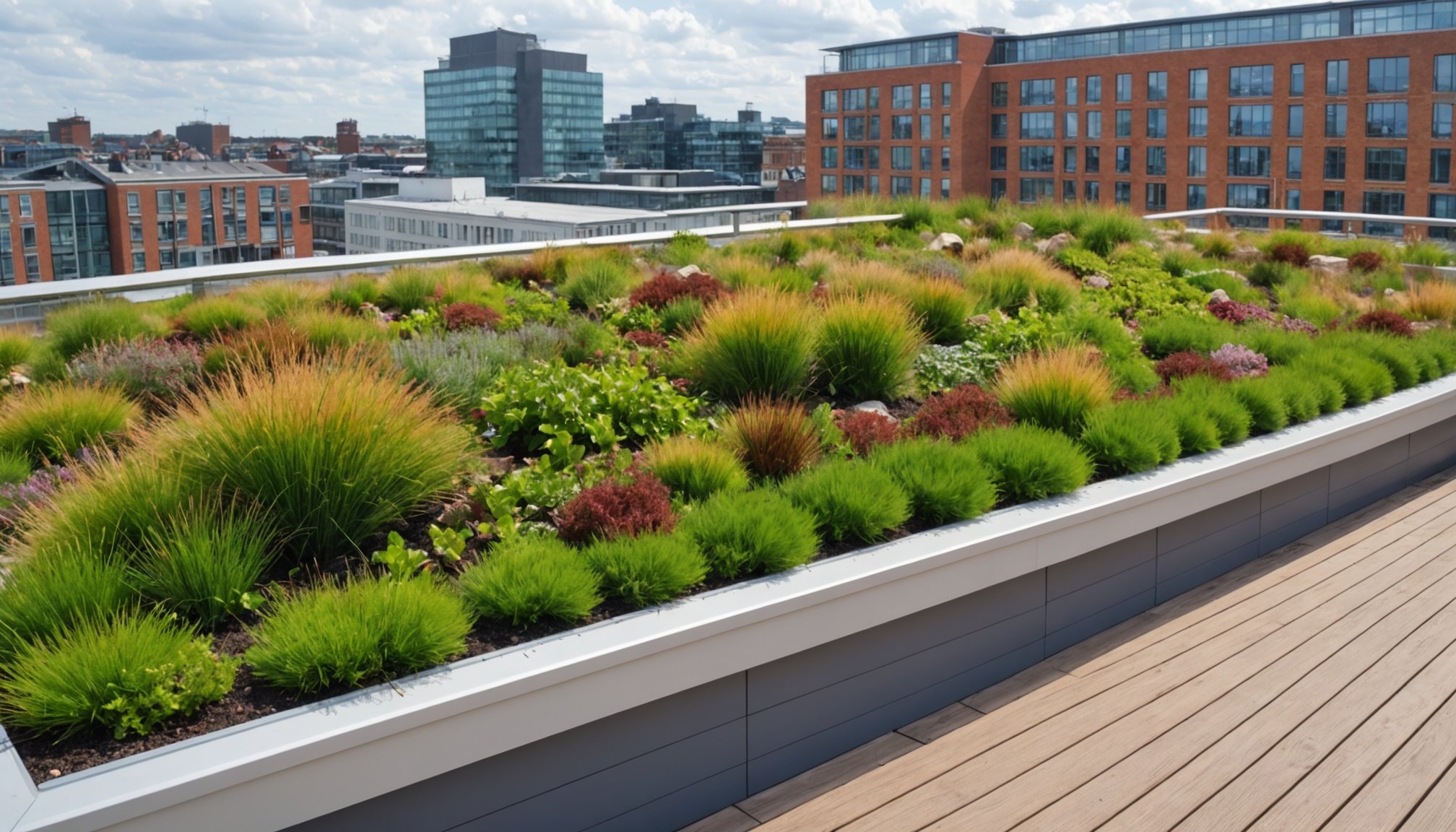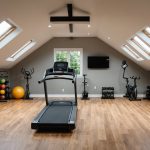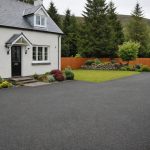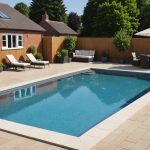Understanding Green Roofs
Exploring the world of green roofs reveals a compelling approach to eco-friendly design that is transforming cityscapes. These innovative systems are planted layers on rooftops, offering a multitude of benefits in urban environments.
Types of Green Roofs
Extensive roofs are one type, characterized by a thinner layer of soil and low-maintenance vegetation, like grasses and sedums. They are lightweight, making them ideal for most buildings without significant structural modifications. Intensive roofs, in contrast, are akin to traditional gardens, featuring deeper soil and a wider variety of plants, including trees and shrubs. These require more maintenance but can cater to more diverse plant life.
A voir aussi : Essential Factors to Think About When Installing a Skylight in UK”s Rain-Prone Coastal Regions
Significance and Benefits
For inner-city office buildings, green roofs present significant advantages. They contribute to urban sustainability by reducing the urban heat island effect, thus lowering building cooling costs. Their vegetation absorbs rainwater, alleviating stormwater runoff issues. This eco-friendly design also improves air quality and provides aesthetically pleasing work environments, fostering employee well-being. Moreover, green roofs boost biodiversity in urban settings by creating habitats for various species.
Incorporating green roofs in urban planning not only addresses environmental challenges but also enhances overall city life quality, underscoring their growing importance in sustainable development strategies.
Sujet a lire : Essential Factors to Consider When Installing a Vertical Garden on Your UK Terrace Home
Best Practices for Designing Green Roofs
Creating a green roof is an art and science that blends sustainable architecture with ecological responsibility. Key design principles ensure that these living roofs not only enhance aesthetics but significantly reduce environmental impact. Central to this is selecting the right plant species. By choosing vegetation that is suited to the local climate and rooftop conditions, maintenance needs are minimized, while biodiversity is encouraged. Grasses and succulents are popular choices for many regions due to their hardiness and low water requirements.
Effective drainage and irrigation systems are crucial to managing green roof design. Without these, water can accumulate, leading to structural damage or plant failures. A well-designed drainage layer ensures excess water is swiftly removed, while an integrated irrigation system provides plants with necessary moisture during dry spells. Utilize materials like crushed brick or expanded clay to boost drainage efficiency.
Principles such as maximizing plant coverage also play a pivotal role. More vegetation means better insulation and a greater reduction in urban heat. Above all, the integration of these principles works toward forming a symbiotic relationship between modern architecture and nature, which is the essence of a productive green roof. Embracing these elements can transform any roof into a sustainable haven, improving the environment and urban life.
Materials and Construction Techniques
Green roofing is an innovative approach to urban architecture that harnesses eco-friendly products and advanced construction techniques. Selecting the right green roofing materials is essential for ensuring longevity and efficiency. Commonly used materials include lightweight soil substrates, drainage layers, and a variety of drought-resistant plants. These components work together to create a self-sufficient ecosystem that benefits both the building and the environment.
When installing a green roof, certain techniques must be followed to ensure structural integrity. A waterproof barrier is crucial to prevent leakage, and a root barrier protects the underlying structure. Additionally, careful consideration of the building’s load-bearing capacity is necessary, as green roofs can be considerably heavier than traditional roofing.
For urban settings, there are several cost-effective solutions available. Utilizing modular green roof systems can reduce installation time and costs, while pre-grown sedum mats offer instant coverage and environmental benefits. Employing recycled materials such as crushed bricks can further enhance the project’s sustainability quotient without significantly impacting the budget.
Green roof construction combines innovation and practicality. By prioritizing environmentally-conscious practices and smart design choices, urban spaces can be transformed into thriving green zones, contributing to ecological balance and reduced urban heat.
Environmental and Economic Benefits
Implementing green roofs offers numerous environmental benefits and energy-saving opportunities. One significant advantage is their ability to alleviate urban heat islands. By absorbing sunlight and providing excellent insulation, these roofs help in lowering the surrounding temperature, consequently improving a city’s overall climate.
Moreover, the energy efficiency of buildings equipped with green roofs is noteworthy. They reduce the need for air conditioning during the summer and provide natural heating in the winter. This not only conserves energy but also translates to substantial cost savings for property owners. With less reliance on mechanical heating and cooling systems, operational costs can decrease significantly over time.
The cost savings potential of green roofs extends beyond immediate energy reduction. The initial investment, although seemingly high, can be quickly recouped. Over time, the reduction in energy bills, coupled with increased property value, results in a compelling return on investment. Additionally, many regions offer incentives and tax breaks for installing such sustainable solutions, further enhancing their economic allure.
In summary, green roofs not only contribute to environmental preservation but also present a financially sound investment. By embracing these energy-efficient options, stakeholders can achieve both environmental benefits and economic gains, promoting a sustainable and cost-effective approach to urban living.
Maintenance Strategies for Green Roofs
Ensuring your green roof thrives requires a consistent mix of thoughtful care techniques and proactive measures. Routine maintenance tasks are crucial to preserve the health and longevity of your green roof. These tasks include weeding and irrigating, which prevent the encroachment of unwanted plants and ensure proper hydration levels. Another routine process is inspecting drainage systems to avoid water logging, which can lead to more severe issues.
Seasonal fluctuations pose unique challenges that influence the maintenance needs of green roofs. For instance, summer might demand increased irrigation due to higher temperatures, while autumn might lead to more debris removal due to falling leaves. Winter, on the other hand, necessitates the monitoring of snow accumulation to prevent overload on the structure.
A pivotal aspect to consider is whether to enlist the help of professional maintenance services. These experts can offer insights into advanced sustainability practices and ensure all structural components remain in top condition. Hiring professionals can be especially beneficial for intricate systems needing specialized care that goes beyond standard maintenance tasks. With their expertise, your green roof can enjoy optimized conditions year-round, yielding environmental and aesthetic benefits.
Regulatory Considerations and Incentives
When considering installing a green roof in the UK, it’s essential to understand applicable building regulations. These regulations often encompass standards for load-bearing capacity, fire safety, and insulation. Given the added weight a green roof might introduce, compliance with structural norms is critical to ensure safety and functionality.
Moreover, local authorities might offer financial incentives to encourage sustainable building practices. These can include grants, subsidies, or tax reductions geared toward reducing installation costs. To take advantage of these incentives, you’ll need to submit detailed project plans that align with the environmental objectives of your regional or local councils.
However, navigating local planning requirements can be complex. Often, a green roof project will need planning permission, particularly if it affects the building’s appearance or height. Consultation with planning officers will clarify the requirements and help streamline the approval process.
So, whether it’s tackling regulations or seeking out incentives, starting with a clear understanding of UK policies can significantly ease the development of a green roof project. Engaging with local authorities early can also provide insights into specific regional constraints or opportunities that may influence project feasibility.
Case Studies of Successful Green Roof Projects
Green roofs have redefined urban planning in many parts of the UK. Let’s explore some notable success stories and the lessons they offer.
One standout project is the green roof on London’s Lambeth Civic Centre. This installation is acclaimed for its biodiversity, which significantly contributes to cooling the urban heat environment. Residents and local authorities report enhanced air quality and noise reduction, illustrating a win-win in urban settings.
Another successful example is the Sky Garden in Liverpool. This project was driven by community initiatives to reconnect city dwellers with nature. Its success lies in its sustainable design and the ongoing commitment from residents to maintain the green space. This involvement has fostered community pride and provided a haven for urban wildlife.
The impact of these green roofs is profound, as feedback from urban areas has shown. They do not only transform aesthetically but also influence community well-being positively. Many cities have reported declines in energy costs and increased property values in areas with green roofs.
These implementations underscore the importance of involving community members and ensuring long-term maintenance plans for sustainability. Learning what works in these successful stories can guide future projects, providing both environmental and communal benefits in densely populated areas.
Resources and Expert Insights
When embarking on a green roof project, arming yourself with the right resources can make a significant difference. Leveraging both expert advice and comprehensive materials ensures a successful implementation.
Additional Resources for Further Research and Education
There are numerous publications and online platforms dedicated to green roofing. These resources offer in-depth discussions about the benefits and challenges you might face. Books and journals, often authored by seasoned industry professionals, detail technical aspects and emerging trends. Further reading is invaluable for getting acquainted with regional climate considerations and plant selections.
Expert Recommendations on Green Roof Implementation
Experts emphasize the importance of a structurally sound base before starting any green roof project. Consulting with architects or landscape professionals can provide insights specific to your environment and structural requirements. Embracing expert advice means ensuring sustainability and efficiency from the outset.
Visual Aids and Tools for the Design Process
Design tools and software can visually demonstrate how your green roof could look and function. These aids often include environmental impact simulations and cost analysis features, allowing you to grasp project feasibilities. By utilising such visual tools, you can make informed decisions quickly, possibly even sparking creative ideas.
Incorporating these resources and insights is crucial for anyone serious about implementing a robust and aesthetically pleasing green roof.






